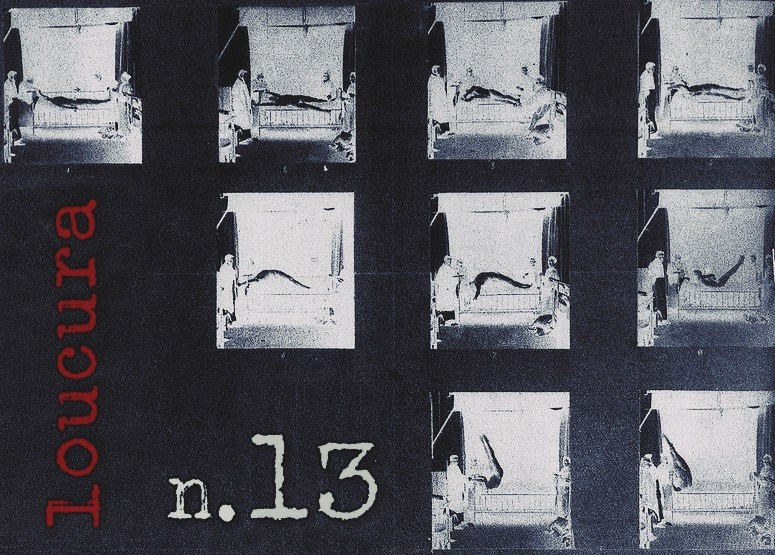ELENA GARRO, A DESHORA: FIGURAS LITERARIAS DE LA ABYECCIÓN
DOI:
https://doi.org/10.11606/issn.1984-1124.v0i13p83-90Keywords:
Elena Garro, Tlatelolco, delirium, abjectionAbstract
The massacre of Tlatelolco in 1968 was the most bloody incident of Diaz Ordaz’s government in Mexico and promoted a severe process of persecution and repression of the student movement. One of its consequences was the suspicion of betrayal by Elena Garro of the movement’s intellectual authors. Since then, Garro embodied an abject character of collaboration, in constant harassment, leading to her exile during twenty years.
This paper considers the implications of the accusation and the diagnosis of insanity that accompanies it. For some critics this insanity is redeemed in her literary work, which in this operation achieves prominence; but the insanity can be thought of as irreducible. Garro’s delirious gaze doesn’t sublimate the trauma, but repeats again and again the political violence, with harassed, exposed and out of place characters, in situations of daily totalitarianism. Figures of betrayal emerge in her histories, involving characters and knowledge outside the language of the official left (animal, children, women, the indigenous), marked by their helplessness and questioning the premises of political parties.
Downloads
References
ARTAUD, Antonin. Van Gogh. O suicidado pela sociedade, Rio de Janeiro: Achiamé, s/d.
CABRERA, Rafael. “La desconocida historia de la fuga de Elena Garro”. Emeequis, México, n. 309, p. 23-29, 2013. Disponible en: http://www.m-x.com.mx/2013-08-18/la-desconocida-historia-de-la-fuga-de-elena-garro. Acceso en: 01 maio 2014.
CARBALLO, Emmanuel; BATIS, Humberto. “Los cazamemorias. ¿Perseguidos o perseguidores? Conversación radiofónica sobre Elena Garro”. In: MELGAR, Lucía; MORA, Gabriela. Elena Garro. Lectura múltiple de una personalidad compleja, Puebla: Benemérita Universidad Autónoma de Puebla, 2002, p. 53-66.
DELEUZE, Gilles. Critique et clinique, Paris: Les éditions de minuit, 1993.
DOMÍNGUEZ MICHAEL, Christopher. “El asesinato de Elena Garro, de Patricia Rosas Lopátegui”. Letras Libres, México, p. 74-76, octubre 2006. Disponible en: http://www.letraslibres.com/revista/libros/el-asesinato-de-elena-garro-de-patricia-rosas-lopategui?page=full. Acceso en: 01 maio 2014.
GARRO, Elena. “Autorreflexiones”. In: MELGAR, Lucía; MORA, Gabriela. Elena Garro. Lectura múltiple de una personalidad compleja. Puebla: Benemérita Universidad Autónoma de Puebla, 2002, p. 279-299.
GARRO, Elena. Obras Reunidas I. Cuentos, México: FCE, 2006.
LISCANO, Carlos. La literatura pertenece a la lengua. Cuadernos de Recienvenido, n. 29, 2013.
PAZ, Octavio. “Poesía en movimiento”. In: PAZ, Octavio; CHUMACERO, Alí; PACHECO, José Emilio; ARIDJIS, Homero (eds.). Poesía en movimiento. México: FCE, 1988.
VEGA, Patricia. “Elena Garro o la abolición del tiempo”. In: MELGAR, Lucía; MORA, Gabriela. Elena Garro. Lectura múltiple de una personalidad compleja. Puebla: Benemérita Universidad Autónoma de Puebla, 2002, p. 93-148.
Downloads
Published
Issue
Section
License
Authors who publish with this journal agree to the following terms:
- Authors retain copyright and grant the journal right of first publication with the work simultaneously licensed under a Creative Commons Attribution License that allows others to share the work with an acknowledgment of the work's authorship and initial publication in this journal.
- Authors can enter into separate, additional contractual arrangements for the non-exclusive distribution of the journal's published version of the work (e.g., post it to an institutional repository or publish it in a book), with an acknowledgment of its initial publication in this journal.
- Authors are permitted and encouraged to post their work online (e.g., in institutional repositories or on their website) before and during the submission process, as it can lead to productive exchanges, as well as earlier and greater citation of published work (See The Effect of Open Access).



